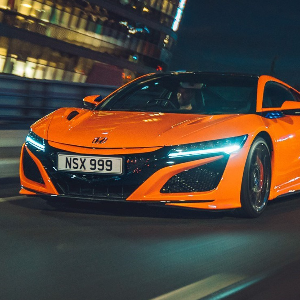
It is cute, stylish and electric. What's not to like? Colin Goodwin took a closer look.
The Honda E that you and I can buy is not as cute or stylish as the concept car that’s been shown at motor shows for the last couple of years. That’s how it tends to go with concept cars: because they don’t have to conform exactly to regulations or to cost considerations, they tend to be more extreme or wacky than the car that eventually turns up in showrooms. But never mind because the Honda E is still the most visually appealing electric car that I’ve so far driven in these early days of the electric revolution.
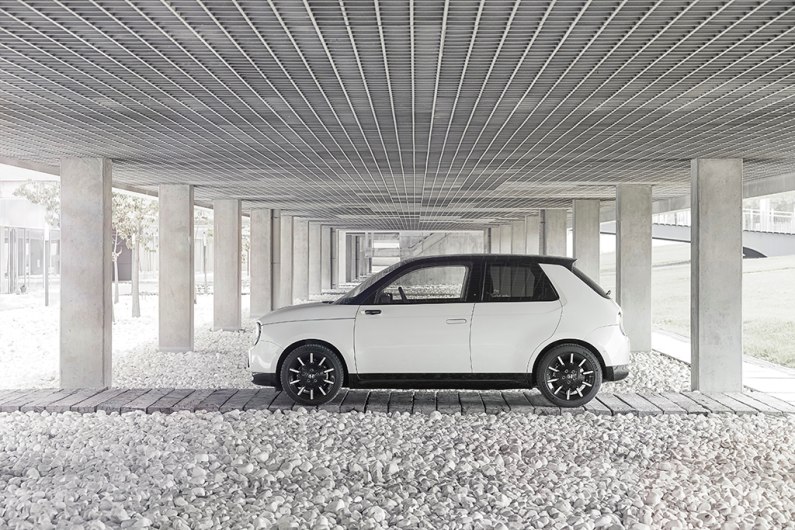
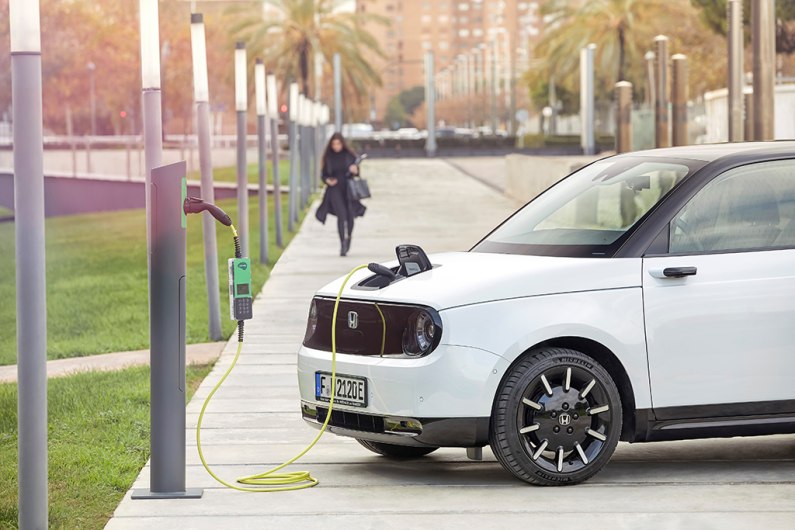
First of all the Honda E is very compact at a parking space friendly 3.9 metres long. That makes it the ideal vehicle for city use. As does another feature of the car. Because it is short there is not a huge amount of room for batteries so Honda has fitted the E with a 35.5kWh battery which, to put that into perspective for those still on the EV learning curve, is pretty small. The Nissan Leaf e+ is fitted with a 62kWh battery and has a range of 239 miles; the Honda’s range is a maximum of 137 miles if it’s fitted with 16inch wheels or 125 miles if it has 17 inch wheels. What size wheels will you be having on your Honda E? I thought so.
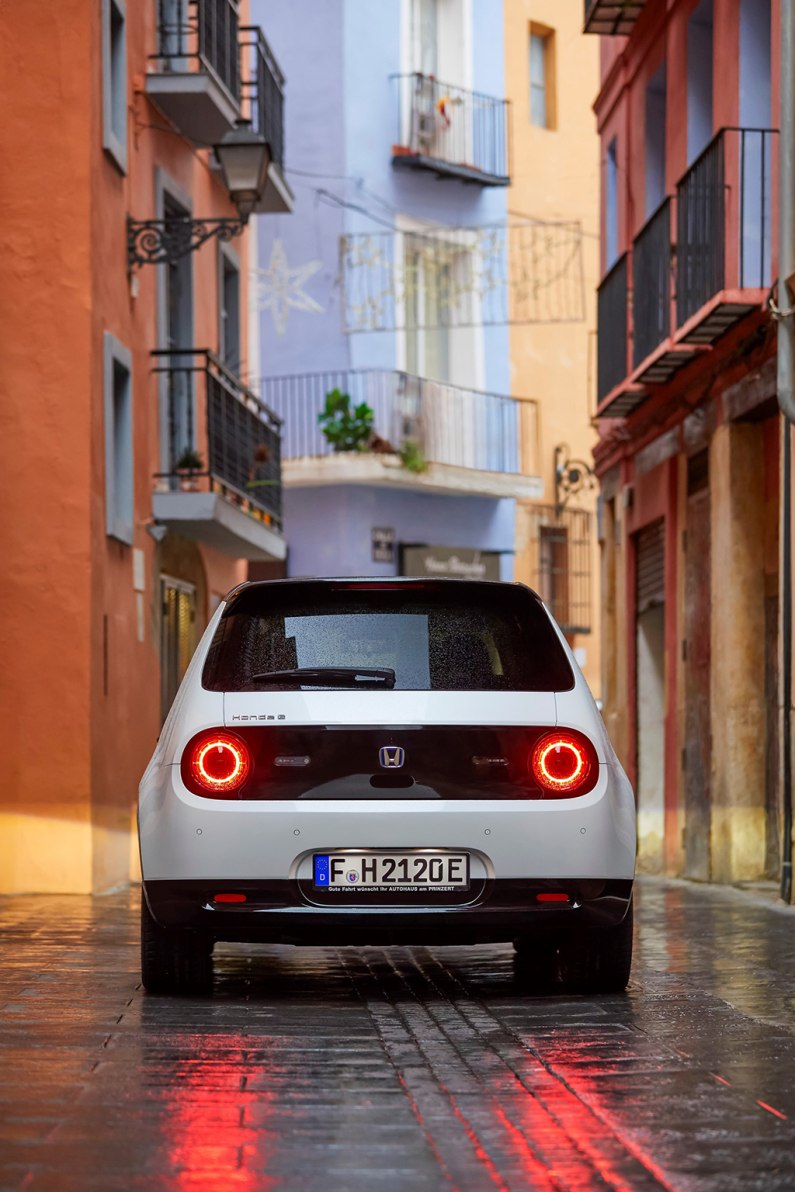
The little Honda comes in two versions, the standard car which has a 134bhp electric motor and the Honda E Advance which comes with a 151bhp motor. Both have the same range and both can be charged at up to 100kW using a DC fast charger that will take the batteries from 0-80% charge in 30 minutes. The more common 50kW rapid chargers will recharge the car’s batteries in 31 minutes.
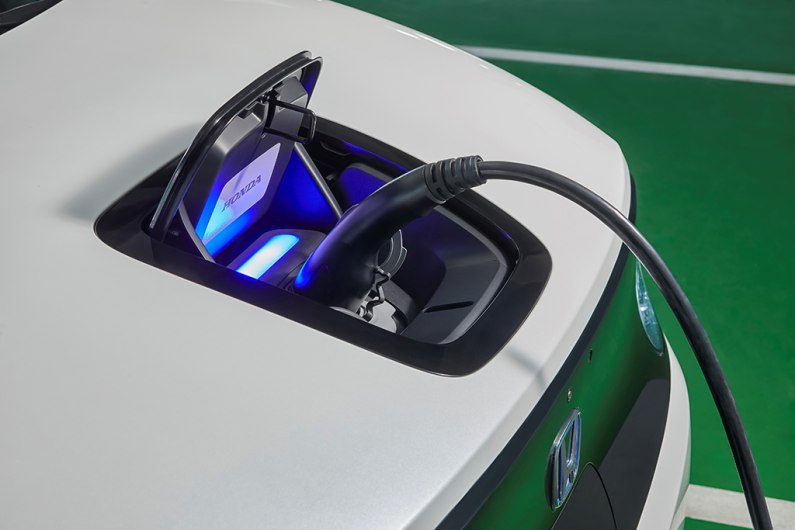
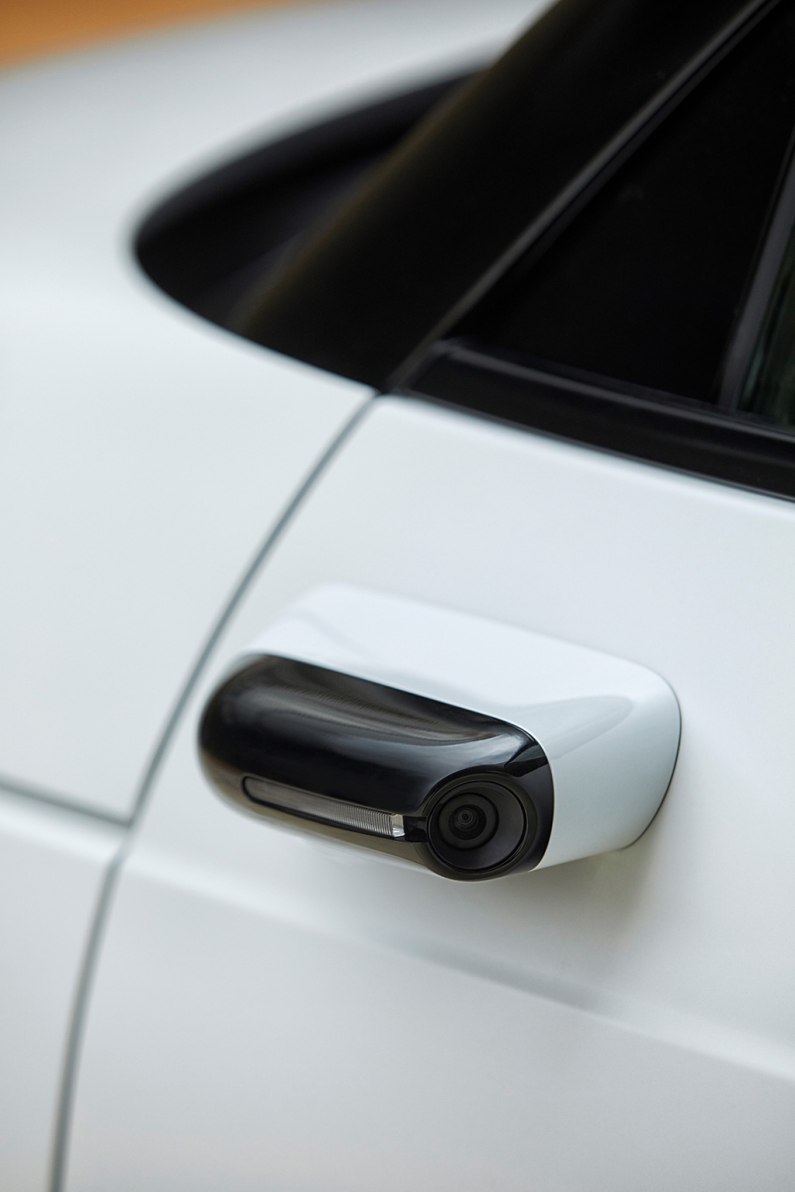
We tested the Honda E Advance (before the lockdown of course) in Valencia which happened to be experiencing the worst storms in decades. Driving the Honda on teeming wet roads with the windscreen wipers permanently on and the air-conditioning stopping the windows from steaming up had a catestrophic effect on our car’s range cutting it to well under 100 miles.
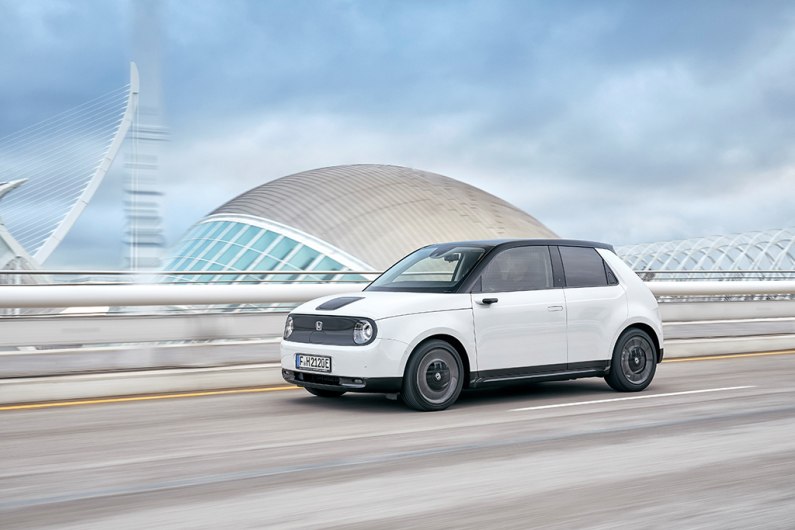
Honda is aiming the E at city users and apparently the majority of the 200 advanced orders for the car are from buyers who live in Greater London. Probably people who own a second car which can be used for longer journeys. That demographic also reflects the fact that the Honda is not a cheap car. Our Advance version costs £28,660 after the grant and the standard car £26,610. A lot of money for a small car but then this Honda is a very easy car to fall for.
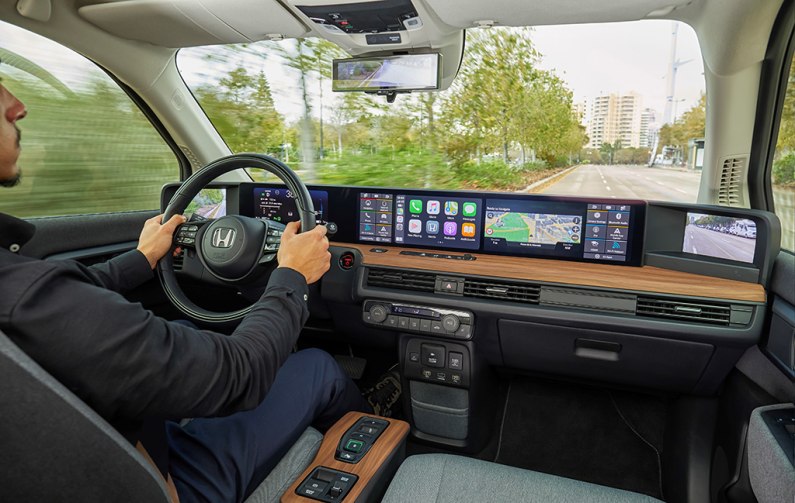
Surprisingly, or perhaps not when the logic is explained, Honda has had a lot of enquiries from the Scottish Highlands. An EV in a very remote rural area? The explanation is that in many villages the local filling station has closed down and refilling your car’s petrol or diesel tank can involve a long round trip. If you have an electric car then the filling station is at your house. It makes sense, especially if most of your journeys are local.
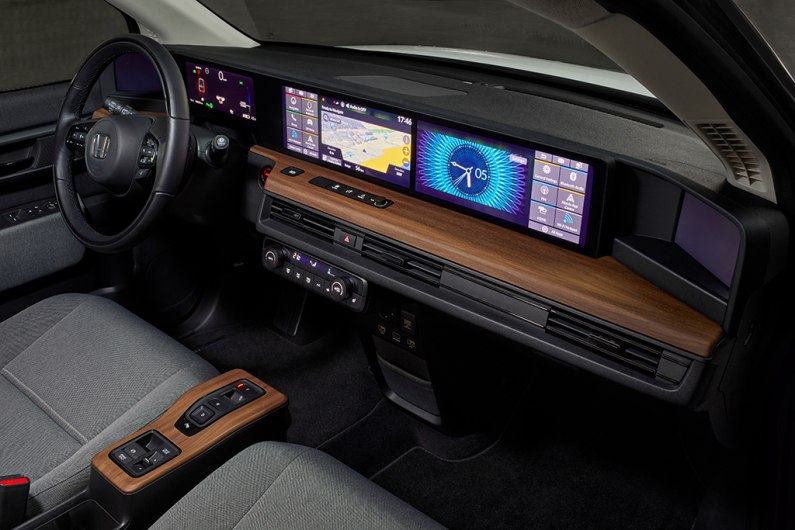
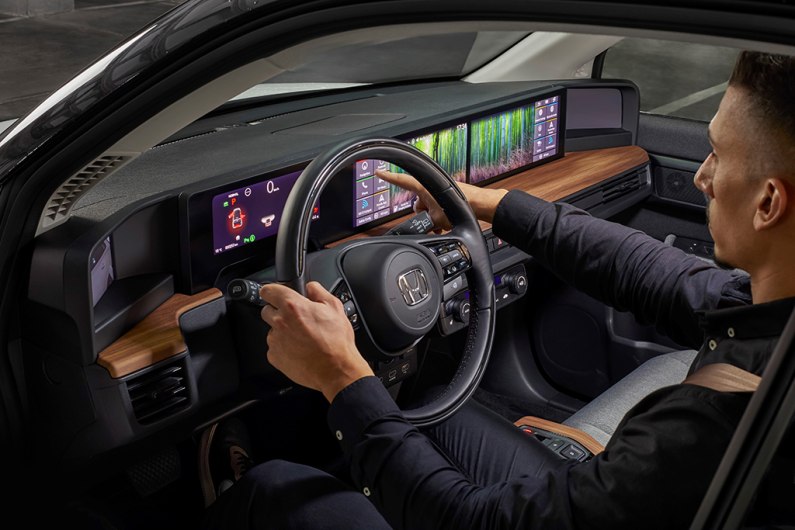
Step inside and you’ll see a pretty amazing interior. If you like digital screens you’ve got an array in the Honda that wouldn’t disgrace Curry’s front window. Screens run the whole length of the dashboard and include two 12in displays. What’s clever and very useful is that you can swap functions from screen to screen. For example, if you’re busy driving you can whizz the navigation screen over to your passenger so that he or she can enter an address of even give you instructions.
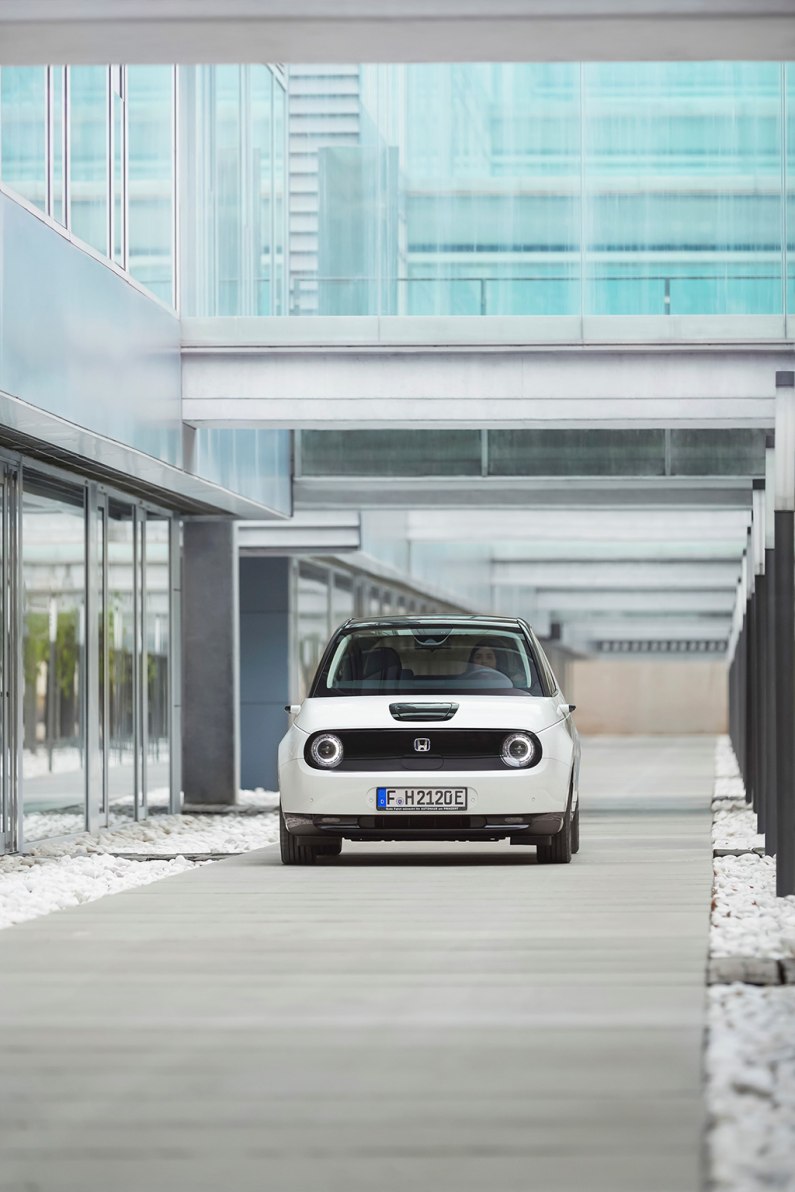
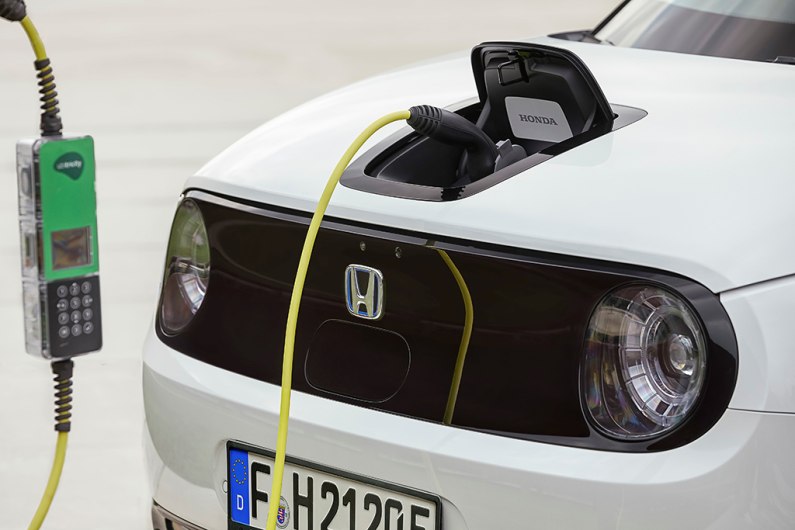
At the outermost edges of this panorama are two small screens that display images from the two video cameras that take the place of door mirrors on the Honda E. Audi uses the same set-up on it e-tron SUV but they’re nothing like as effective as the ones on the Honda. They take no time at all to get used to, give an excellent view, and never once got dirty despite the foul weather. The rearview mirror is also digital but this did get dirty but fortunately you can tilt it so that it works as a conventional mirror.
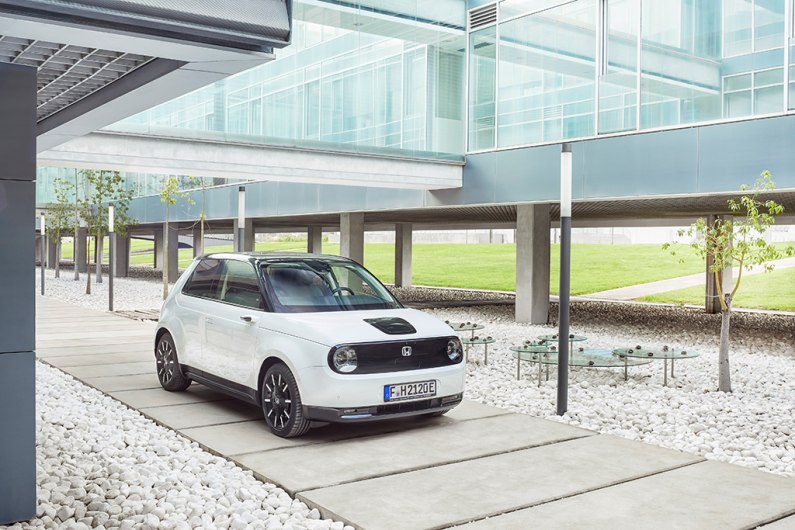
The Honda’s interior is impressive from tasteful fabric covering the seats to the slab of wood that runs the length of the flat surface of the dashboard below the screens and which also covers the small centre console. There’s adequate room in the front of the Honda but it’ll be a squeeze for adults in the back. Again, not such a problem in a car that’ll be doing short journeys. Because the electric motor is in the back and drives the rear wheels there’s not a huge boot, only 171 litres with the rear seats in place. There’s no storage under the bonnet because the front of the car is crammed full of the inverter and various appendages.
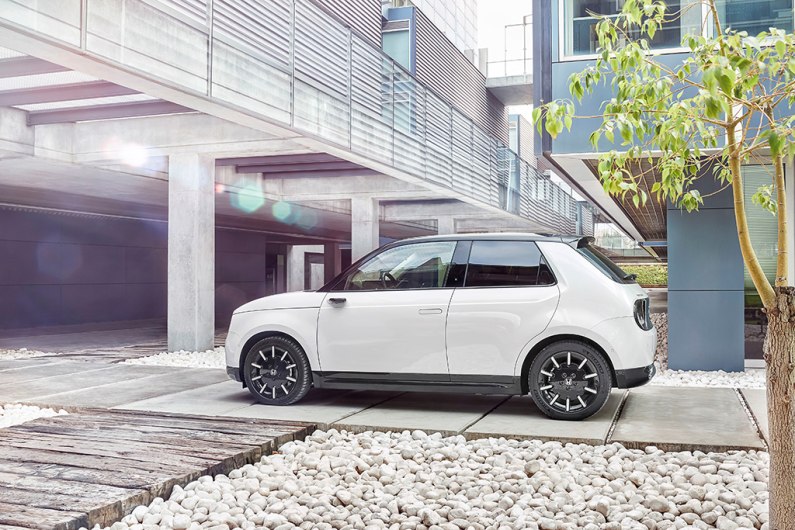
The gubbins in the front and the rear-mounted electric motor plus the centrally mounted batteries give the Honda E a 50/50 weight distribution. While the E isn’t sporty to drive it feels very well balanced and rides bumps well. It’ll do 0-62mph in 8.3sec but the instant torque makes it feel nippier than that. If it was possible to disable the traction control system the Honda would be very snappy in the wet. What’s far more useful for a city car is the Honda’s admirably tight 8.6 metre kerb-to-kerb turning circle.
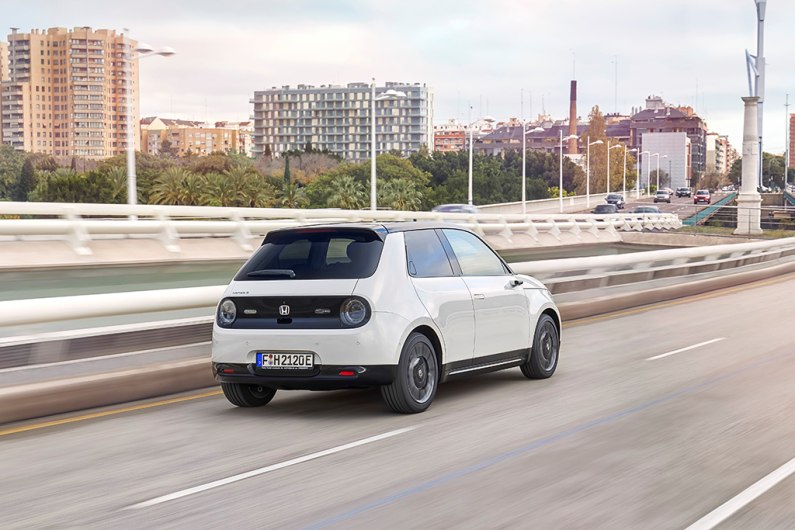
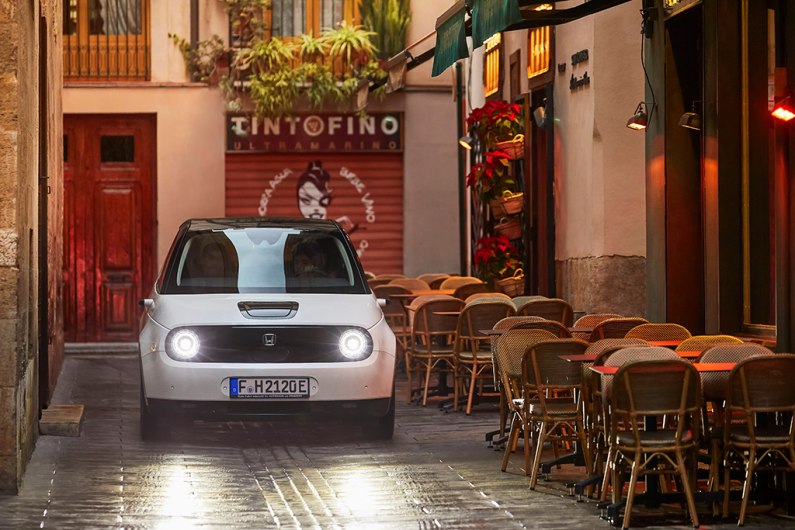
The Honda E is a great looking little car but its limited range and its high price is going to make the car a rare sight on our roads. It’s a car that’s easy to love but Volkswagen’s e-Up that costs £6,000 less yet has a longer range is a much more logical buy. There will, however, be people with deep pockets that will fall in love with the little Honda’s styling and terrific interior and buy one even though they have the funds to purchase a far more expensive car.
Model tested: Honda E Advance
Price: £28,860
Engine: Single electric motor
Power: 151bhp
Battery: 35.5kWH
0-62mph: 8.3 seconds
Max speed: 90mph
Range: 137 miles
